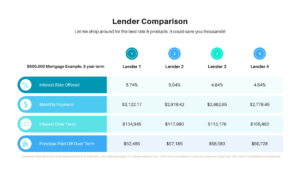Maximizing Tax Savings
For self-employed individuals, obtaining a mortgage can be a daunting task due to the complexities involved in verifying their income. Traditional lenders often require extensive documentation, making it difficult for these entrepreneurs to qualify for standard mortgages. However, the Canadian mortgage broker industry offers several tailored solutions to help self-employed individuals achieve their dream of homeownership while maximizing tax savings. In this blog, we will explore four key mortgage options: Verified Income, Stated Income, Alternative Lenders, and Private lending, and highlight how each option empowers self-employed individuals to save on personal taxes and secure reasonable income amounts for mortgage qualification.
Verified Income:
The Verified Income mortgage option is a conventional route where lenders rely on official income documents, such as tax returns and pay stubs, to assess the borrower’s financial credibility. While this option allows for a lower minimum down payment, it poses challenges for self-employed individuals. Most entrepreneurs claim deductions to minimize taxable income, which may result in lower mortgage eligibility.
Stated Income:
Stated Income mortgages provide a more accessible alternative for self-employed borrowers. Instead of relying solely on official documents, borrowers can declare their income, making the process smoother. However, Stated Income mortgages often require a minimum 10% down payment, which may still be substantial for some entrepreneurs.
Alternative Lenders:
Option 3 involves Alternative Lenders who understand the unique financial situations of self-employed individuals. These lenders use a more flexible approach to income verification, considering bank statements and business revenue as qualifying factors. Though a 20% down payment is needed, the benefits are significant: self-employed individuals can save on personal taxes by declaring a reasonable income that accurately reflects their financial situation.
Moreover, the 1% lender fee and slightly higher interest rates are a small trade-off for the increased likelihood of mortgage approval and reduced emphasis on traditional income verification.
Private Lending:
Private lending, our fourth option, offers a viable solution for self-employed individuals who face challenges with traditional lenders. While a 20% down payment is required, private lenders are more concerned with the property’s value and the borrower’s equity than their official income. This flexibility allows entrepreneurs to take advantage of substantial tax savings by declaring a reasonable income amount that aligns better with their actual financial situation.
However, private lending typically comes with a 1% fee or higher, as well as additional private lending fees and higher interest rates. Despite this, the benefits of accessing the real estate market and saving on personal taxes can outweigh the added costs, especially for those with a clear plan to transition back to traditional lending when their financial situation improves.
Importance of Utilizing Self-Employed Mortgage Solutions:
It’s crucial for self-employed individuals to grasp the importance of these specialized mortgage solutions. By opting for Stated Income, Alternative Lenders, or Private lending, they can secure mortgages without artificially inflating their income or facing strict verification requirements.
The significant tax savings gained by not having to claim high personal incomes to qualify for conventional mortgages can have a substantial impact on the borrower’s financial stability. These savings can be reinvested into their business or used to strengthen their overall financial position.
Working with a Skilled Mortgage Broker:
To optimize the benefits of these self-employed mortgage solutions, partnering with a skilled mortgage broker is paramount. An experienced broker can guide borrowers through the complexities of each option, assess their financial situation, and develop a short-term plan to transition back to traditional lending.
Conclusion:
In conclusion, self-employed individuals in Canada have viable mortgage solutions to realize their dream of homeownership while maximizing tax savings. Verified Income, Stated Income, Alternative Lenders, and Private lending offer flexible approaches to income verification, enabling borrowers to declare reasonable income amounts that accurately represent their financial situation.
While each option has its considerations, the advantages of saving on personal taxes and entering the real estate market make them valuable choices for entrepreneurs. Working alongside a knowledgeable mortgage broker can further enhance the benefits of these solutions, ultimately paving the way for self-employed individuals to thrive financially and achieve their homeownership aspirations.
